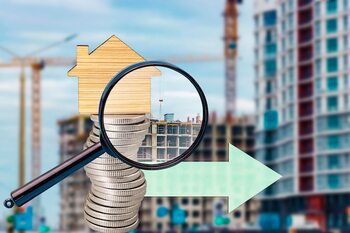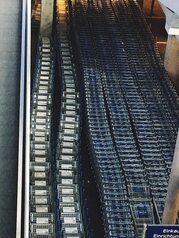The Value of Social Trends in Real Estate Appreciation

The real estate market is a reflection of the social dynamics that surround it. In Costa Rica, social trends directly impact the appreciation of properties, transforming neighborhoods into coveted areas. Understanding how these trends influence the location and value of a property is key to making informed investment decisions. In this article, we will explore how changes in lifestyles, cultural preferences, and community needs can increase the appeal of certain places, turning them into safe and profitable investments.
The influence of local culture on real estate appreciation.
Local culture plays a fundamental role in the valuation of properties, as each community presents unique characteristics and traditions that attract different demographic groups. For example, an area with a rich cultural heritage can become a magnet for those who value art, music, and native cuisine. This type of attraction not only beautifies the urban environment but also generates a sense of belonging among residents, which is essential for fostering a cohesive community. As a result, areas that celebrate their cultural identity tend to experience continuous appreciation in their real estate values.
Similarly, the influence of cultural events and local festivals can have a direct effect on real estate appreciation. Community activities such as craft fairs, outdoor concerts, and farmers' markets not only enrich the social fabric of a locality but also increase its visibility and appeal to potential buyers and investors. These initiatives can transform previously neglected neighborhoods into vibrant places where people want to live or invest. In this sense, understanding how these cultural elements interact with the real estate market is crucial for identifying valuable opportunities within the urban context of Costa Rica.
2. Demographic trends: who are the new buyers?
Demographic trends are changing rapidly, and with them, the composition of new buyers in the real estate market. Increasingly, young professionals and modern families are looking for properties that not only offer a place to live but also align with their values and lifestyle. This demographic group tends to prioritize features such as sustainability, connectivity, and access to community services. The demand for real estate in areas that promote an active and healthy lifestyle is on the rise, which is significantly influencing the appreciation of certain locations.
On the other hand, the growth of the older adult population is also reshaping the profile of real estate buyers. Seniors are looking for homes adapted to their needs, close to medical services and recreational options. This trend represents an opportunity to develop housing projects that offer accessibility and comfort. As this segment of the population grows, the areas that manage to meet these specific needs will see an increase in their value, becoming strategic points for profitable and sustainable real estate investments over time.
3. The rise of remote work and its impact on emerging areas
The rise of remote work has transformed not only the way people carry out their work activities but also the way they choose where to live. More and more professionals are opting to move to emerging areas that offer a higher quality of life relative to the cost of living in large cities. This shift has led to an increase in demand for properties in areas previously considered peripheral, which in turn drives up their value. The characteristics of these areas, such as open spaces, nearby services, and a more relaxed environment, have become key factors for those seeking a balance between work and personal life.
Additionally, remote work has allowed many families to reevaluate their housing needs. The search for homes with dedicated office spaces has intensified, driving interest in properties that offer greater flexibility and functionality. This has generated a positive effect on the local real estate market of these emerging areas, where developers are beginning to adapt their projects to include features that meet this new demand. Consequently, not only is the value of these areas increasing, but it is also fostering a stronger and more cohesive sense of community among residents who share similar lifestyles.
4. Green spaces and quality of life: a priority for modern buyers
The growing awareness of the importance of green spaces in the urban environment has led many modern buyers to prioritize properties that offer access to parks, gardens, and recreational areas. These spaces not only provide a visual respite amid the urban landscape but also promote a healthier lifestyle. Studies have shown that living near green areas is associated with better mental and physical health, which translates to a higher quality of life for their residents. Therefore, properties located near these spaces tend to experience an increase in their value, becoming attractive options for those seeking a home.
Additionally, the incorporation of green areas in urban design promotes a sense of community and belonging among neighbors. Parks and gardens act as meeting points where families can socialize, engage in outdoor activities, or simply enjoy the natural surroundings. This community interaction not only enhances social cohesion but can also increase the positive perception of a particular area. Thus, buyers are increasingly willing to invest in properties located near well-maintained green spaces, as this not only improves their personal quality of life but also represents a smart strategy for securing a sustainable and valuable long-term real estate investment.
5. The importance of sustainable urban development
Sustainable urban development is a concept that has become fundamental in the planning of cities and communities. This approach seeks to balance economic growth, social equity, and environmental protection. In Costa Rica, where natural beauty and biodiversity are an integral part of national identity, promoting development that respects these elements not only improves the quality of life for residents but also increases property values in well-planned areas. Communities that implement sustainable practices often attract environmentally conscious buyers, which raises their demand and, consequently, their appreciation.
Additionally, sustainable urban development fosters greater social cohesion by creating accessible and friendly public spaces for all. This includes parks, recreational areas, and integrated commercial zones, which not only beautify the urban environment but also promote meaningful community interactions. Properties located in neighborhoods with these characteristics tend to be more desirable for young families and professionals, who seek a balanced lifestyle between work and leisure. In this way, the focus on sustainable urbanism becomes a catalyst for the increase in long-term real estate value.
6. Community projects: raising the value of local property
Community projects play a fundamental role in enhancing urban spaces, as they promote social cohesion and improve the quality of life for residents. Initiatives like urban gardens, cultural centers, and beautification programs not only visually transform a neighborhood but also create a sense of belonging among its inhabitants. By involving the community in the design and execution of these projects, the social fabric is strengthened, and deeper connections are forged, which in turn can attract new residents and investors interested in being part of a vibrant and active environment.
Additionally, community projects can be catalysts for local economic development. By creating spaces where people gather and share experiences, local trade is stimulated and emerging businesses are promoted. Craft fairs or farmers' markets are clear examples of how these initiatives can energize a neighborhood economy by providing local entrepreneurs with a platform to showcase their products. As economic activity flourishes in an area, so does its real estate value; this makes nearby properties even more attractive investments for those looking to maximize their financial return.
7. The connection between infrastructure and real estate appreciation
Infrastructure plays a crucial role in real estate valuation, as it not only determines the accessibility of a property but also affects its overall appeal. The construction of new roads, efficient public transportation, and basic services such as water and electricity can transform a previously neglected area into a desirable one. When investment is made in infrastructure, economic opportunities increase and a favorable environment for urban development is generated. This, in turn, elevates the value of nearby properties, making them valuable assets for investors and homeowners.
Additionally, the connection between infrastructure and real estate appreciation goes beyond the physical; it also includes social aspects such as safety and access to community services. Areas with quality schools, nearby hospitals, and recreational spaces tend to attract families and professionals seeking a balanced lifestyle. Thus, when local authorities prioritize the comprehensive development of these infrastructures, it fosters a favorable environment that not only enhances the quality of life for current residents but also attracts new tenants and investors. In this context, understanding how these dynamics influence property valuation is essential for those looking to maximize their return on investment in the real estate market.
8. How social media influences the perception of the ideal neighborhood
Social media has radically transformed the way people perceive and choose their place of residence. Platforms like Instagram, Facebook, and TikTok are not just spaces to share photographs and experiences; they have also become showcases where neighborhoods display their essence. Images of cozy cafes, vibrant parks, or community events can generate a positive perception of a neighborhood, attracting potential buyers and renters seeking a specific living experience. This visual and emotional influence can elevate demand for properties in areas that may have previously been overlooked, causing their value to soar.
Additionally, social media allows current residents to share their stories and daily experiences, creating a sense of community that resonates with those seeking a new home. Testimonials about quality of life, safety, and local activities spread quickly, directly affecting the neighborhood's reputation. This phenomenon can lead to an increase in real estate interest, as prospective homeowners want to be part of those positive narratives. Thus, the constant flow of information and opinions online plays a crucial role in shaping the image of the ideal neighborhood, which directly impacts its valuation within the real estate market.
9. Predictions about future social trends and their effect on the real estate market.
Constantly evolving social trends, such as the growing search for sustainability and remote work, are redefining housing preferences in Costa Rica. More and more people value properties that not only offer comfort but also align with their ethical values and lifestyle. This has led to an increase in demand for homes in natural environments, where residents can enjoy outdoor spaces and a higher quality of life. As a result, areas previously considered peripheral are gaining appeal and increasing in value, while properties located in congested urban areas may lose their worth.
Additionally, the rise of technology and digitalization is transforming how we interact with our environments. The integration of smart solutions in the home not only improves energy efficiency but also creates a more convenient lifestyle for tenants and homeowners. Communities that adopt these technological innovations become attractive destinations for an increasingly young and connected population. Therefore, understanding these future social trends will enable investors to anticipate changes in the real estate market and make more informed decisions about where to place their capital to maximize long-term profitability.



